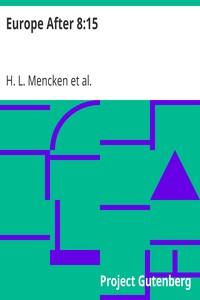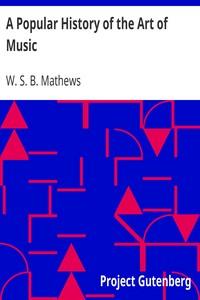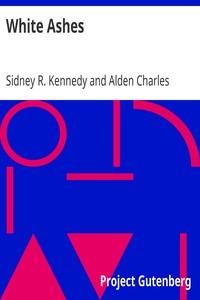|
|
Read this ebook for free! No credit card needed, absolutely nothing to pay.Words: 35349 in 6 pages
This is an ebook sharing website. You can read the uploaded ebooks for free here. No credit cards needed, nothing to pay. If you want to own a digital copy of the ebook, or want to read offline with your favorite ebook-reader, then you can choose to buy and download the ebook.

: Europe After 8:15 by Mencken H L Henry Louis Nathan George Jean Wright Willard Huntington Benton Thomas Hart Illustrator - Europe Social life and customs@FreeBooksTue 06 Jun, 2023 Thomas Whiteside The Tunnel Under the Channel SIMON AND SCHUSTER ? NEW YORK ? 1962 ALL RIGHTS RESERVED INCLUDING THE RIGHT OF REPRODUCTION IN WHOLE OR IN PART IN ANY FORM COPYRIGHT 1961, 1962 BY THOMAS WHITESIDE PUBLISHED BY SIMON AND SCHUSTER, INC. ROCKEFELLER CENTER, 630 FIFTH AVENUE NEW YORK 20, N. Y. FIRST PRINTING LIBRARY OF CONGRESS CATALOG CARD NUMBER: 62-9744 MANUFACTURED IN THE UNITED STATES OF AMERICA BY AMERICAN BOOK-STRATFORD PRESS, INC., NEW YORK The tunnel seems always to have had a capacity to arouse in its proponents a peculiarly passionate and unquenchable enthusiasm. Men have devoted their adult lives to promoting the cause of the tunnel, and such a powerful grip does the project seem to have had on the imagination of its various designers that just to look at some of their old drawings--depicting, for example, down to the finest detail of architectural ornamentation, ventilation stations for the tunnel sticking out of the surface of the Channel as ships sail gracefully about nearby--one might almost think that the tunnel was an accomplished reality, and the artist merely a conscientious reporter of an existing scene. Such is the minute detail in which the tunnel has been designed by various people that eighty-six years ago the French Assembly approved a tunnel bill that specified the price of railway tickets for the Channel-tunnel journey, and even contained a clause requiring second-class carriages to be provided with stuffed seats rather than the harder accommodations provided for third-class passengers. And an Englishman called William Collard, who died in 1943, after occupying himself for thirty years with the problem of the Channel tunnel, in 1928 wrote and published a book on the subject that went so far as to work out a time-table for Channel-tunnel trains between Paris and London, complete with train and platform numbers and arrival and departure times at intermediate stations in Kent and northern France. As for the actual engineering details, a Channel tunnel has been the subject of studies that have ranged from collections of mere rough guesses to the most elaborate engineering, geological, and hydrographic surveys carried out by highly competent civil-engineering companies. Interestingly enough, ever since the days, a century or so ago, when practical Victorian engineers began taking up the problem, the technical feasibility of constructing a tunnel under the Channel has never really been seriously questioned. Yet, despite effort piled on effort and campaign mounted on campaign, over all the years, by engineers, politicians, and promoters, nobody has quite been able to push the project through. Up to now, every time the proponents of a tunnel have tried to advance the scheme, they have encountered a difficulty harder to understand, harder to identify, and, indeed, harder to break through than any rock stratum. If the proponents and promoters of the tunnel have never quite succeeded in putting their project across in all the years, they have never quite given up trying, either; and now, in a new strategic era of nuclear rockets, a new era of transport in which air ferries to the Continent carry cars as well as passengers, and a new era of trade, marked by the emergence and successful growth of the European Economic Community, or Common Market, the pro-tunnel forces have been at it again, in what one of the leading pro-tunnelers has called "a last glorious effort to get this thing through." This time they have encountered what they consider to be the most encouraging kind of progress in the entire history of the scheme. In April, 1960, an organization called the Channel Tunnel Study Group announced, in London, a new series of proposals for a Channel tunnel, based on a number of recent elaborate studies on the subject. The proposals called for twin parallel all-electric railway tunnels, either bored or immersed, with trains that would carry passengers and transport, in piggyback fashion, cars, buses, and trucks. The double tunnel, if of the immersed kind, would be 26 miles long between portals. A bored tunnel, as planned, would be 32 miles long and would be by far the longest traffic tunnel of either the underwater or under-mountain variety in the world. The longest continuous subaqueous traffic tunnel in existence is the rail tunnel under the Mersey, connecting Liverpool and Birkenhead, a distance of 2.2 miles; the longest rail tunnel through a mountain is the Simplon Tunnel, 12.3 miles in length. The Channel tunnel would run between the areas of Sangatte and Calais on the French side, and between Ashford and Folkestone on the English side. Trains would travel through it at an average speed of 65 miles an hour, reaching 87 miles an hour in some places, and at rush hours they would be capable of running 4,200 passengers and 1,800 vehicles on flatcars every hour in each direction. While a true vehicular tunnel could also be constructed, the obviously tremendous problems of keeping it safely ventilated at present make this particular project, according to the engineers, prohibitively expensive to build and maintain. The train journey from London to Paris via the proposed tunnel would take four hours and twenty minutes; the passenger trains would pass through the tunnel in about thirty minutes. Passengers would pay 32 shillings, or .48-.92 cheaper than the cost of a first-class passenger ticket on the Dover-Calais sea-ferry--to ride through the tunnel; the cost of accompanied small cars would be .48, a claimed 30 per cent less than a comparable sea-ferry charge. The tunnel would take four to five years to build, and the Study Group estimated that, including the rail terminals at both ends, it would cost approximately 4,000,000. All that the Study Group, which represents British, French and American commercial interests, needs to go ahead with the project and turn it into a reality is--besides money, and the Study Group seems to be confident that it can attract that--the approval of the British and French Governments of the scheme. For all practical purposes, the French Government never has had any objection to a fixed installation linking both sides of the Channel, and as far as the official British attitude is concerned, when the British Government announced, in July, 1961, that it would seek full membership in the European Common Market, most of the tunnel people felt sure that the forces of British insularity which had hindered the development of a tunnel for nearly a century at last had been dealt a blow to make them reel. But what raised the pro-tunnelers' excitement to the greatest pitch of all was the decision of the French and British Governments, last October, to hold discussions on the problem of building either a bridge or a tunnel. When these discussions got under way last November, the main question before the negotiators was the economic practicality of such a huge undertaking. THE FIRST SCHEME for the construction of a tunnel beneath the English Channel was put forward in France, in 1802, by a mining engineer named Albert Mathieu, who that year displayed plans for such a work in Paris, at the Palais du Luxembourg and the ?cole Nationale Sup?rieure des Mines. Mathieu's tunnel, divided into two lengths totaling about eighteen and a half miles, was to be illuminated by oil lamps and ventilated at intervals by chimneys projecting above the sea into the open air, and its base was to be a paved way over which relays of horses would gallop, pulling coachloads of passengers and mail between France and England in a couple of hours or so of actual traveling time, with changes of horses being provided at an artificial island to be constructed in mid-Channel. Mathieu managed to have his project brought to the attention of Napoleon Bonaparte, the First Consul, who was sufficiently impressed with it to bring it to the attention of Charles James Fox during a personal meeting of the two men during the Peace of Amiens. Fox described it as "one of the great enterprises we can now undertake together." But the project got no further than this talking stage. In 1803, a Frenchman named de Mottray came up with another proposal for creating a passage underneath the Channel. It consisted of laying down sections of a long, submerged tube on top of the sea bed between England and France, the sections being linked together in such a way as to form a watertight tunnel. However, Mottray's project petered out quickly, too, and the subject of an undersea connection between the two countries lay dormant until 1833, when it attracted the attention of a man named Aim? Thom? de Gamond, a twenty-six-year-old French civil engineer and hydrographer of visionary inclinations. Such exasperating objections to joining England and France above water sent Thom? de Gamond back to the idea of doing the job under the sea, and between 1842 and 1855 he made various energetic explorations of the Channel area in an attempt to determine the feasibility of driving a tunnel through the rock formations under the Strait. Geological conditions existing in the middle of the Strait were, up to that time, almost entirely a matter of surmise, based on observations made on the British and French sides of the Channel, and in the process of finding out more about them, Thom? de Gamond decided to descend in person to the bottom of the Channel to collect geological specimens. In 1855, at the age of forty-eight, he had the hardihood to make a number of such descents, unencumbered by diving equipment, in the middle of the Strait. Naked except for wrappings that he wound about his head to keep in place pads of buttered lint he had plastered over his ears, to protect them from high water pressure, he would plunge to the bottom of the Channel, weighted down by bags of flints and trailing a long safety line attached to his body, and a red distress line attached to his left arm, from a rowboat occupied also by a Channel pilot, a young assistant, and his own daughter, who went along to keep watch over him. On the deepest of these descents, at a point off Folkestone, Thom? de Gamond, having put a spoonful of olive oil into his mouth as a lubricant that would allow him to expel air from his lungs without permitting water at high pressure to force its way in, dived down weighted by four bags of flints weighing a total of 180 pounds. About his waist he wore a belt of ten inflated pig's bladders, which were to pull him rapidly to the surface after he had scooped up his geological specimen from the Channel bed and released his ballast, and, using this system, he actually touched bottom at a depth of between 99 and 108 feet. His ascent from this particular dive was not unremarkable, either; in an account of it, he wrote that just after he had left the bottom of the Channel with a sample of clay ... I was attacked by voracious fish, which seized me by the legs and arms. One of them bit me on the chin, and would at the same time have attacked my throat if it had not been preserved by a thick handkerchief.... I was fortunate enough not to open my mouth, and I reappeared on top of the water after being immersed fifty-two seconds. My men saw one of the monsters which had assailed me, and which did not leave me until I had reached the surface. They were conger eels. Free books android app tbrJar TBR JAR Read Free books online gutenberg More posts by @FreeBooks

: A Popular History of the Art of Music From the Earliest Times Until the Present by Mathews W S B William Smythe Babcock - Music History and criticism Music@FreeBooksTue 06 Jun, 2023
|
Terms of Use Stock Market News! © gutenberg.org.in2025 All Rights reserved.






